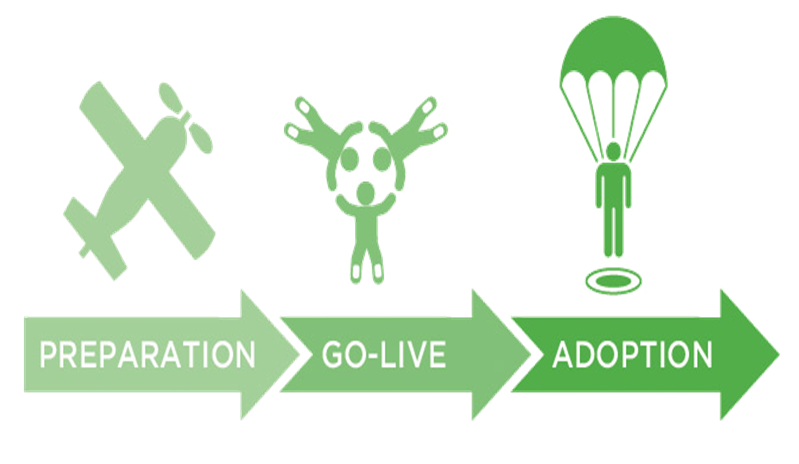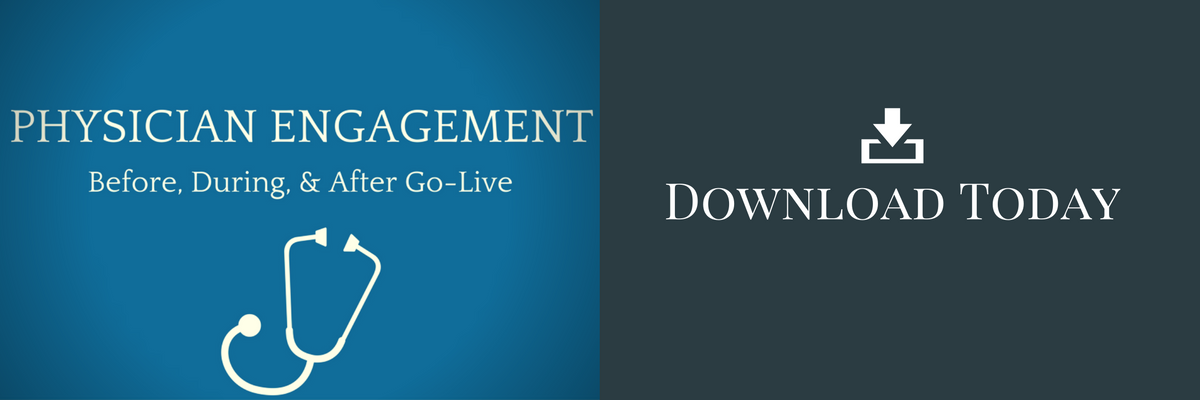Big Bang EHR Go-Lives: ‘Best’ Practices to Avoid

 “Best practices” for a go-live are easy to come by.
“Best practices” for a go-live are easy to come by.
But not all of these to deserve be called “best practices.” Indeed, some are actually hard—if not impossible— to live by.
By definition, a “best practice” should be an “off-the-shelf” solution that works for any organization, with minimal customization. That is, in essence, a practice that works best for one organization should do likewise for another. In reality however, that is not always the case.
Here are some “best practices” you really should ignore. Consider what is best for your organization instead.
1) ‘One Size Fits All Support Ratio.'
The optimal ratio for your organization depends on variables like the number of end users, their acuity and their proximity to one another and support staff.
If your users are spread over a large floor within a hospital, you cannot just take the number of users and divide it by four or five. Users should be able to quickly access at-the-elbow support, without waiting for them to traverse long hallways or navigate through sprawling offices.
You should also accommodate for different learning paces among users. If you know that your users, or certain ones among them, require more 1:1 at the elbow support, then build in more support staff so that they can get the attention they need without depriving others of needed assistance.
Basing the size of your support team on an arbitrary ratio may keep your budget down, but it could build troubles up. Creating your support team around who needs help, where and when, reduces risk to patient safety and speeds adoption of your new EHR.
2) The Physician Champion ‘Silver Bullet’
While physician champions are indispensable to a successful project and Go-Live, ultimately it is causes that create champions. You can name a physician champion to speak for and advocate to their peers, but their efforts will be limited unless you get support for the mission from across the whole organization.
Broader support among your physicians can coalesce into a coalition that really gets things done. Effective physician adoption strategies secure support by engaging members of this important user group early and often, rather than just relying on one-off lunch-and-learns and symbolic inclusion in your steering committee.
Secure support from physicians from every service line, stressing the benefits to their group in particular and the organization whole. Research shows it is good to begin with “why we are doing this” in terms of what is in it for not only the patient, but for you as the provider. Physicians will more readily adopt to the EHR system if they feel as if they were part of the process of choosing and implementing it for your organization.
Medical leadership’s buy-in is also crucial in successfully implementing an EHR system. Start disseminating the project’s benefits to them immediately, emphasizing from the beginning the project’s ability to improve patient care. Include your Chief Medical Officer from the beginning of the evaluation process and keep them involved throughout the go-live. They should attend and present at each sub-specialty division meeting. Each medical specialty area has a unique population, with unique needs and specific work flow. Include them and understand their world. One size does not fit all in the medical practice world (For a more in depth look at Physician Adoption from Dr. Shannon Stinson).
3) Super Users as Trainers
Even the most superb super user is no substitute for professional at-the-elbow support staff. Though super users are extremely useful and should be excused from clinical duties during go-live so that they can use their combined knowledge of the EHR software and of your organization to help other users, they do not bring the experience of at-the-elbow support staff who may have been through a dozen or more go-lives.
A full-time at-the-elbow support professional brings valuable insights and perspectives that can only be gained through experience, as well as advanced technical skills and clinical experience.
For example, if one of your physicians is experiencing a common problem that a software’s training manual does not account for, a cheerful clinician who has seen physicians at multiple organizations frustrated by the same challenge can talk them off the ledge by showing them the solution, and assuring them that they are not alone in their frustration.
With their calming influence that comes from having “been there and done that,” experienced support professionals can bring even your most change-resistant users into the fold.
4) Internal Help Desk
Using your information technology team to field support calls during go-live can be problematic at best. As good as they may be, chances are that they do not know the EHR system. Nor are they clinicians. With limited time before go-live, they cannot be adequately trained to answer questions that will inevitably arise, like, “How do I code for a debridement?”
An internally staffed help desk essentially operates in “catch and release” mode. With little relevant knowledge to fall back on, your internal IT professionals forward rudimentary phone calls to analysts for attention. So, analysts end up providing users with basic training rather than addressing pressing issues that only they can handle.
Conversely, a Tier 1.5 help desk staffed by experienced command center support professionals drastically increases first-call resolution, thereby negating the need to file tickets and forward them to analysts for response. Your analysts can focus on tickets that justify their attention instead of the mundane.
Use outside professionals with advanced training in your particular EHR system for your help desk instead. This allows your internal IT team to continue to fulfill responsibilities not related to implementing the EHR system during go-live. Then they can gradually learn the software so that they can adequately support it afterward. They will much prefer this to being thrown into the craziness of the command center at the most stressful time, when they may be asked to help resolve 500 to 1,000 tickets a day in some cases. (See HCI sustain for more information)
In positioning your IT team for success, you can deliver a smooth and successful Go-Live for your organization.
Just as no hospital is exactly alike, nor is any go-live. Don’t assume “best practices” apply to you, just because they have worked elsewhere. Assess your organization’s readiness for go-live thoroughly and objectively. Then create and nurture the support system that is best for your organization, so that your go-live goes smoothly.

